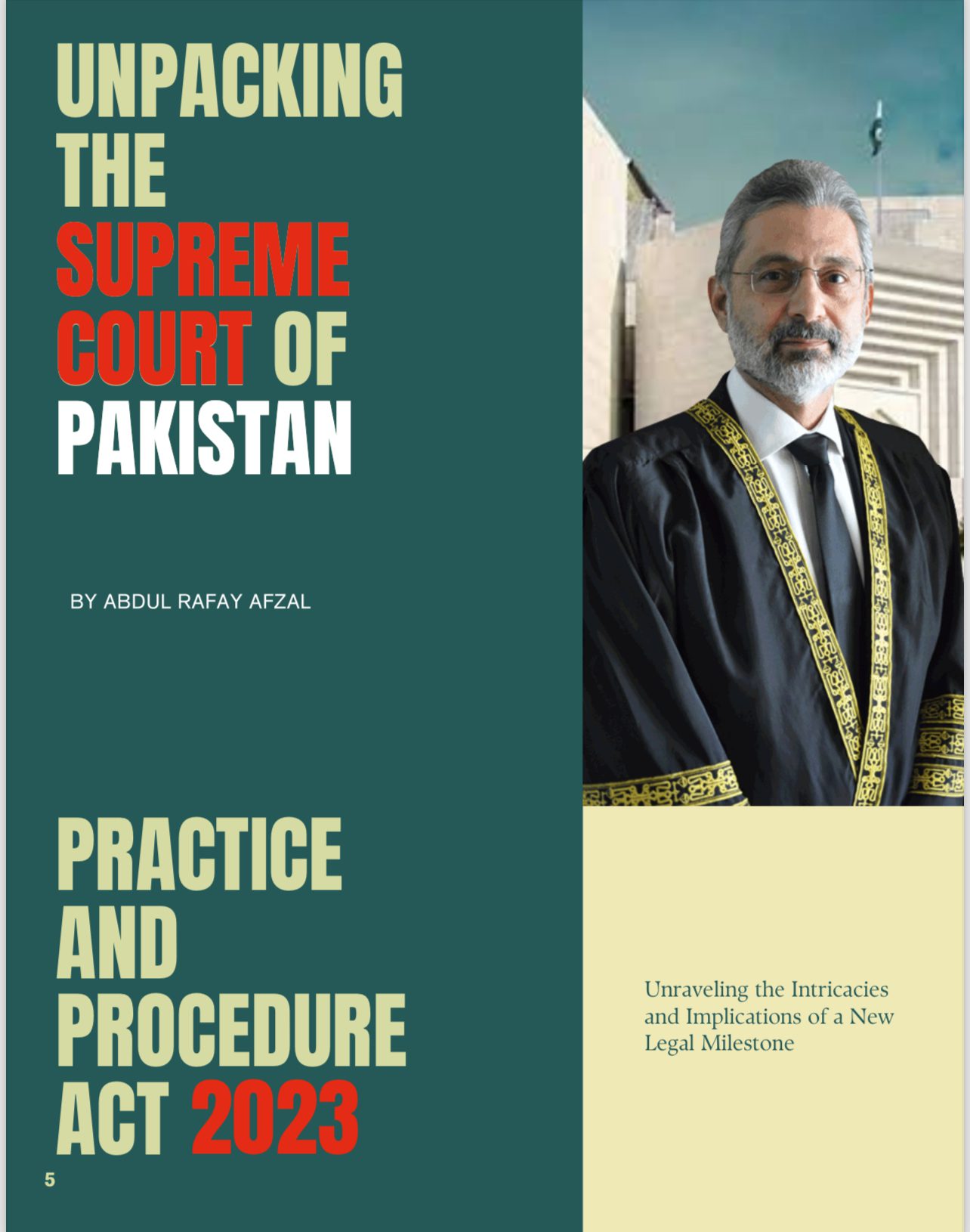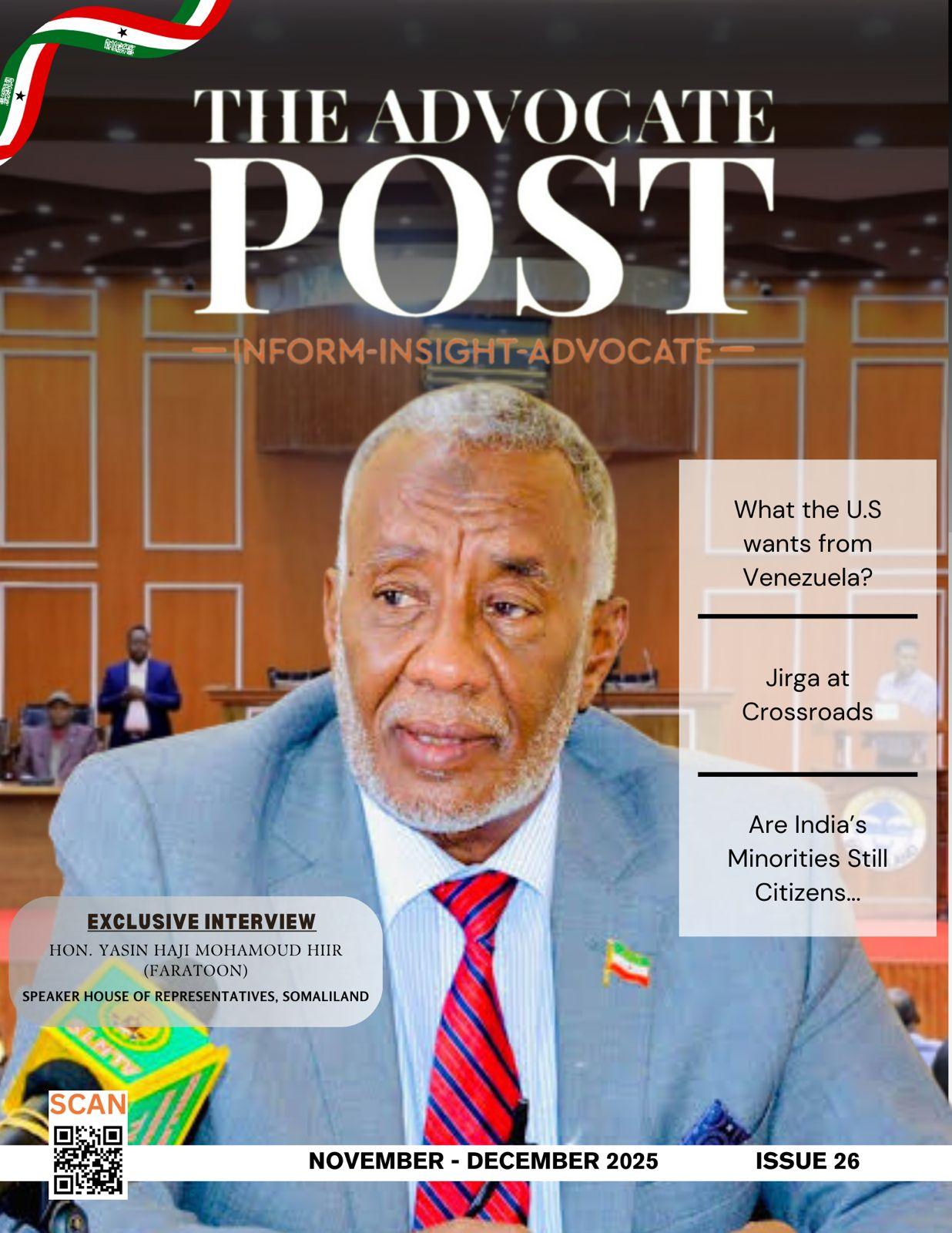By Abdul Rafay Afzal (Editor in Chief)
As student of law and part of the legal community, we bear witness to pivotal moments in our country’s jurisprudence, and the recent upholding of the Pakistan’s Supreme Court (Practice and Procedure) Act 2023 certainly qualifies. Sparking both accolades for modernisation and admonitions of judicial overreach, the Act represents a watershed moment.
Let’s unravel this complex event beginning with its inception, tracing the timeline, analysing the key provisions and their implications, and considering possible future impacts.
The Supreme Court (Practice and Procedure) Act 2023 emerged amidst escalating legal discord involving substantial constitutional questions. Passed by Pakistan’s Parliament on April 10, 2023, the Act sought to clarify the authority and discretionary power of the Chief Justice of Pakistan (CJP), and address issues pertaining to bench composition and suo moto proceedings, among others.
The Act’s journey commenced with its introduction by then-Law Minister Azam Nazeer Tarar, followed by Senate approval and subsequent passage by the National Assembly on March 29, 2023, without referral to the relevant standing committee.
Despite the President’s request for further consideration, resulting in the bill’s return to Parliament twice, the legislation was eventually passed with some modifications amid protests from Pakistan Tehreek-e-Insaf lawmakers.
Fast forward to October 2023, the full bench of the Supreme Court, led by the Chief Justice of Pakistan (CJP) Qazi Faez Isa, deliberated over the petitions against the Act. Finally, on October 11, in a 10-5 verdict, the top court dismissed these petitions, declaring the Act in accordance with the Constitution.
The 2023 Act introduced substantial changes to the Supreme Court’s operations. These include the formation of a three-judge committee, initiated by the CJP, to approve all suo moto notices. The
Act further delegates the task of divvying up crucial constitutional hearings amongst the benches through a transparent process.
In an effort to ensure swift justice, the Act directs the Supreme Court to hear urgent applications or those requesting interim relief within two weeks of filing. More significantly, it permits litigants to appeal to the Supreme Court within 30 days of a lower court’s final order, albeit with prior approval from this lower court.
The decisions against retrospective application of the right to appeal and in favour of preserving this right in suo motu cases under Article 184(3) were decided by narrow majorities. Five judges, including Justice Ijazul Ahsan, Justice Mazahar Naqvi, Justice Muneeb Akhtar, Justice Ayesha Malik, dissented the Act’s upholding, while eight voiced objection to applying the law on past rulings.
The Act’s enactment has provoked a kaleidoscope of reactions across the legal fraternity and civil society. Some laud the move as a much-needed strategy to streamline judicial processes and enhance accountability within the Supreme Court, while detractors perceive a potential undermining of the judiciary’s independence, projecting a veiled attempt to maneuver governmental control over the top court.
A major criticism highlights the act’s concentration of powers with the Chief Justice of Pakistan, who would essentially determine the panel and control suo moto notices direction, resulting in significant influence over the Supreme Court’s decisions. Legal experts also express apprehension about the Act’s potential obstruction of justice. By stipulating lower court approval as a precursor to Supreme Court appeals, the Act may inadvertently inhibit litigants from contesting unjust or unfair lower court rulings, thereby rendering the judicial process more labyrinthine for ordinary citizens.
Historically, the dynamics between the judiciary and the government have been
complex, interspersed with periods of peaceful coexistence and vehement disagreements. The Act is characteristic of this intricate relationship, threading the line between enhancing judiciary proceedings and infringing judicial independence.
In the long run, we must ponder whether the Act, by assigning considerable power to the Chief Justice of Pakistan and imposing stringent appeal prerequisites, contravenes the judiciary’s cardinal principle of dispensing exemplary justice. Conversely. could a more efficient process, as envisaged in the Act, synergise the justicary’s functionaliy and expedie While deciphering the Act’s broader societal and constitutional impacts necessitates the test of time, one thing remains certain. The Act departs significantly from long-standing Supreme Court practices, potentially charting a new judicial course.
As legal stakeholders, the legal community must grasp the Act’s intricacies, weigh the pros and cons, and adapt our legal practice to conform to this seismic shift. Their ultimate collective aim remains consistent: to uphold justice and protect the fundamental rights of our clients and, by extension, every Pakistani citizen.
Author is from Lahore, Pakistan currently a law student at LJMU, UK. He is the Editor in Chief of The Advocate Post He writes on geopolitics, international relations, and legal affairs etc. in more than 8 countries in English & Urdu languages.
Author can be reached at rafayafzal555@gmail.com
Instagram: @arafzal555






